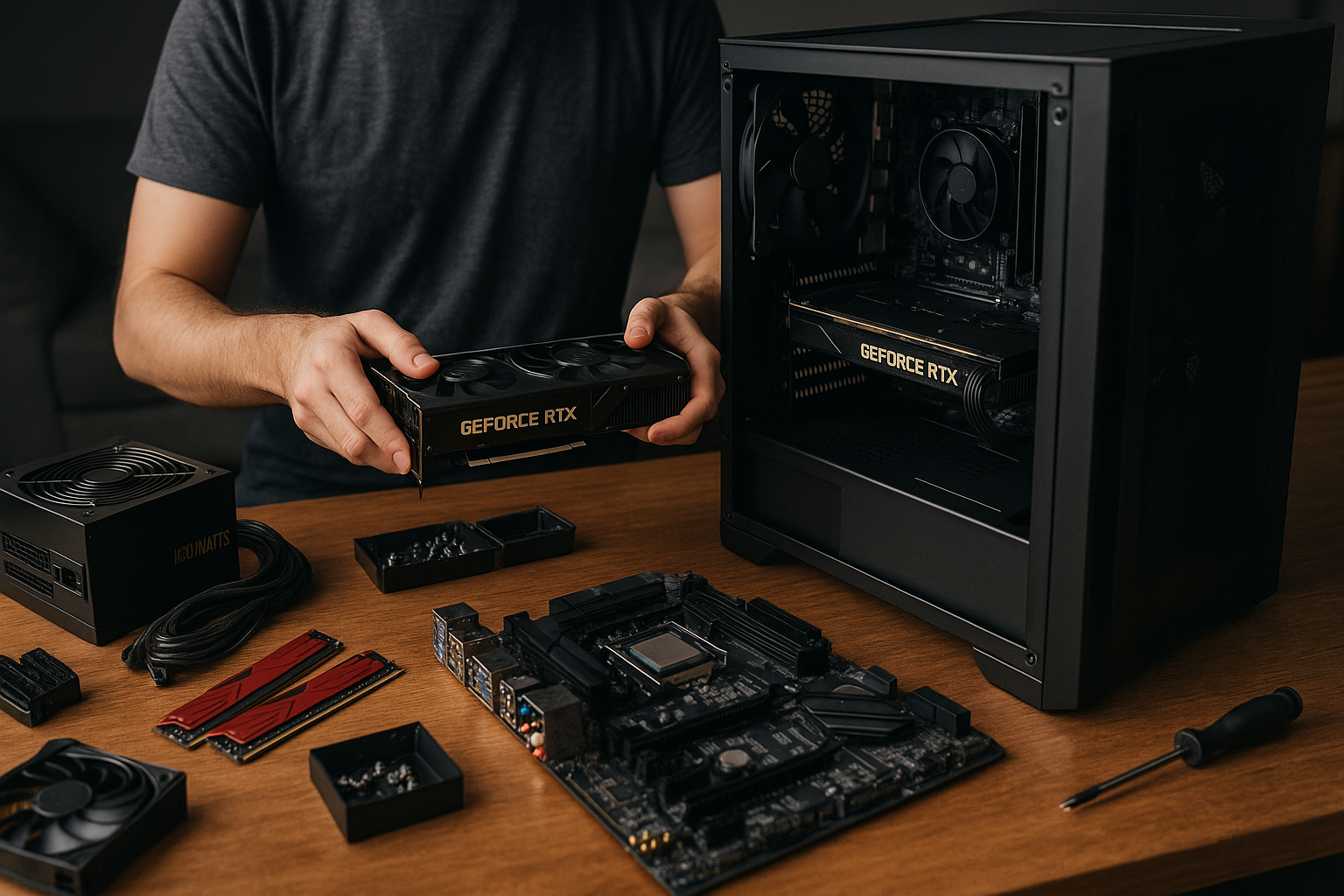Building your own computer can be exciting and empowering — but it also comes with its share of challenges. A few small mistakes can lead to frustration, wasted time, or even damaged components. Whether you’re a first-time builder or someone who’s built PCs before, it’s important to know what pitfalls to avoid.
In this guide, we’ll explore the most common mistakes people make when building a PC and how you can easily avoid them to ensure a smooth and successful experience.
1. Not Planning the Build in Advance
One of the biggest beginner mistakes is buying parts impulsively without verifying compatibility or thinking through the full setup.
How to avoid it:
- Use tools like PCPartPicker to check compatibility between motherboard, CPU, RAM, GPU, PSU, and case.
- Define your goals: gaming, content creation, or general use?
- Decide your budget and list all needed components — including peripherals and cooling.
2. Ignoring Compatibility Between Components
Not all CPUs fit every motherboard. Not every case supports every GPU. It’s critical to check socket types, power needs, and physical dimensions.
Watch out for:
- CPU socket type (e.g., AM4 vs LGA 1700)
- RAM type (DDR4 vs DDR5)
- GPU clearance in the case
- PSU wattage and connectors
- Cooler height vs. case space
Double-check specs on the manufacturers’ websites, and don’t assume a part will “just work.”
3. Forgetting to Install Standoffs for the Motherboard
Standoffs are small brass spacers that go between the case and the motherboard. Without them, you risk short-circuiting the board.
Tip:
Always make sure the standoffs are correctly installed and aligned with your motherboard’s screw holes. Never screw the board directly to the case tray!
4. Not Applying Thermal Paste (or Applying Too Much)
The thermal paste ensures good contact between the CPU and the cooler. Missing this step (or overdoing it) can cause overheating.
Best practice:
- If your cooler comes with pre-applied paste, you’re good to go.
- If not, apply a pea-sized dot in the center of the CPU.
- Avoid spreading it manually or using excessive amounts.
5. Incorrect RAM Installation
Installing RAM sticks in the wrong slots can result in reduced performance or your PC not booting.
Solution:
- Refer to the motherboard manual to see which DIMM slots to use.
- For two sticks, they usually go in slots 2 and 4 (from the left).
- Press firmly until both side clips click into place.
6. Not Connecting All Power Cables
It’s easy to plug in the 24-pin motherboard cable and forget the CPU 8-pin (or 4+4) power connector. Or worse, forget GPU power cables altogether.
Make sure you:
- Connect both 24-pin ATX and 8-pin EPS cables.
- Connect PCIe cables to the GPU if needed.
- Plug in SATA power for SSDs/HDDs and optical drives.
7. Poor Cable Management
Cable clutter isn’t just ugly — it also restricts airflow and increases dust buildup.
Fix it by:
- Routing cables behind the motherboard tray
- Using zip ties or Velcro straps
- Avoiding tangled wires near fans or airflow paths
Clean wiring helps your PC run cooler and makes future upgrades easier.
8. Installing Fans Incorrectly
Fans have a direction — one side pulls in air, the other pushes it out. Mounting them the wrong way can ruin airflow.
Fan setup basics:
- Front and bottom = intake (pull air in)
- Top and rear = exhaust (push air out)
- Aim for balanced airflow: equal intake and exhaust
Many fans have arrows on the side indicating direction. Check before installing.
9. Not Updating the BIOS
Sometimes, your motherboard needs a BIOS update to support a new CPU or fix system bugs. Skipping this can cause boot issues.
When to update:
- If your CPU is newer than your motherboard’s release
- If the system fails to POST (boot) and other fixes fail
Always follow manufacturer instructions carefully, and avoid power interruptions during the update.
10. Forgetting to Ground Yourself
Static electricity can damage sensitive components like the CPU, RAM, or motherboard.
Simple steps to avoid static:
- Work on a non-carpeted surface
- Touch a grounded metal object before handling parts
- Use an anti-static wrist strap if possible
This one step can save you from invisible, costly damage.
11. Mounting the CPU the Wrong Way
Forcing the CPU into the socket or placing it incorrectly can bend pins and ruin the processor or motherboard.
Here’s how to get it right:
- Align the triangle mark on the CPU with the one on the socket
- Don’t force it — it should sit perfectly flat
- Lower the retention arm gently
If it feels wrong, stop and double-check.
12. Not Installing the I/O Shield
Many beginners forget the I/O shield — the metal plate that fits behind the motherboard. Once you install the board, it’s hard to add later.
Install order tip:
- I/O shield in the case first
- Then install the motherboard
- Line up ports carefully
13. Powering On Without Checking Everything
You should always do a final inspection before powering on your build for the first time.
Double-check:
- All power cables are secure
- RAM and GPU are seated properly
- No loose screws or wires touching components
- CPU cooler is tightened down correctly
If all looks good, then press that power button with confidence!
Final Thoughts: Build Smart, Build Safe
Building a PC is a rewarding experience — but it’s also technical. Taking time to research and double-check your steps can save you hours of troubleshooting (or hundreds of dollars in repairs).
Recap:
- Plan your parts carefully
- Prioritize compatibility
- Keep everything clean and organized
- Follow manuals and diagrams
- Don’t rush
Learning from these common mistakes will help you create a stable, powerful, and long-lasting PC that runs like a dream from day one.
